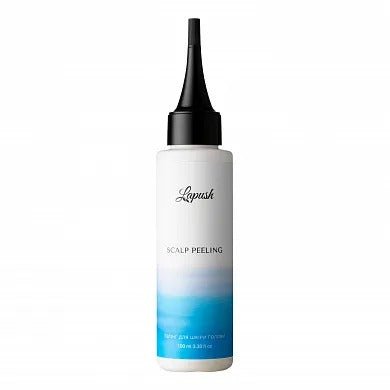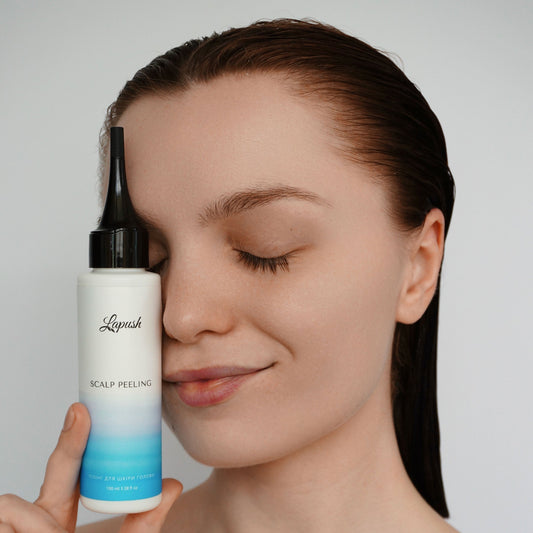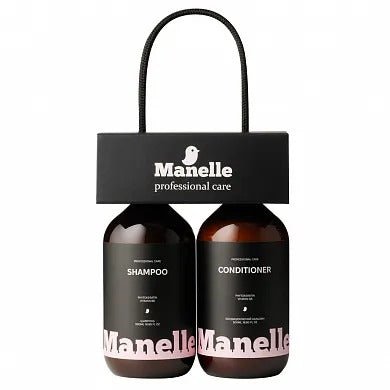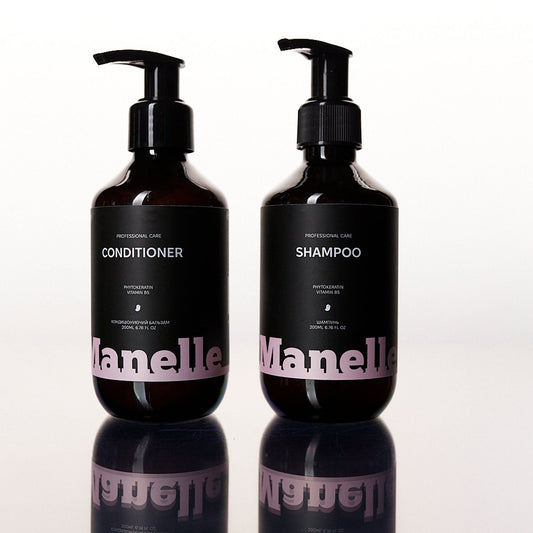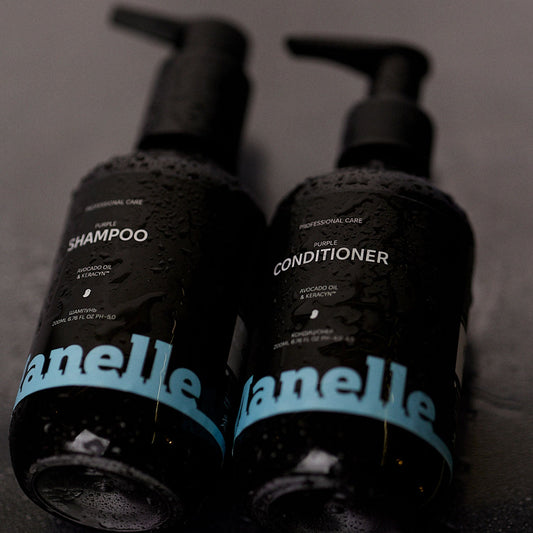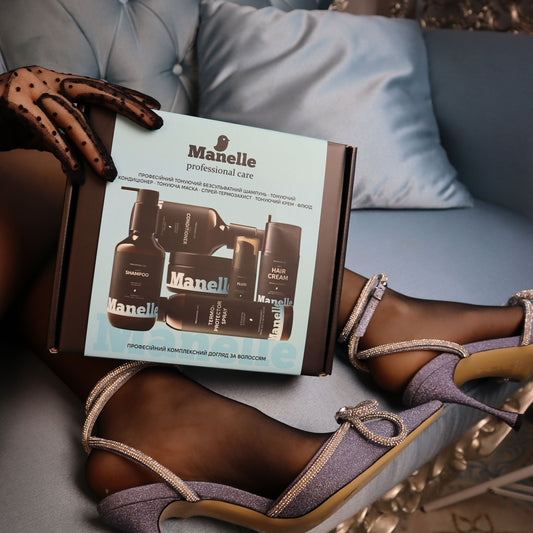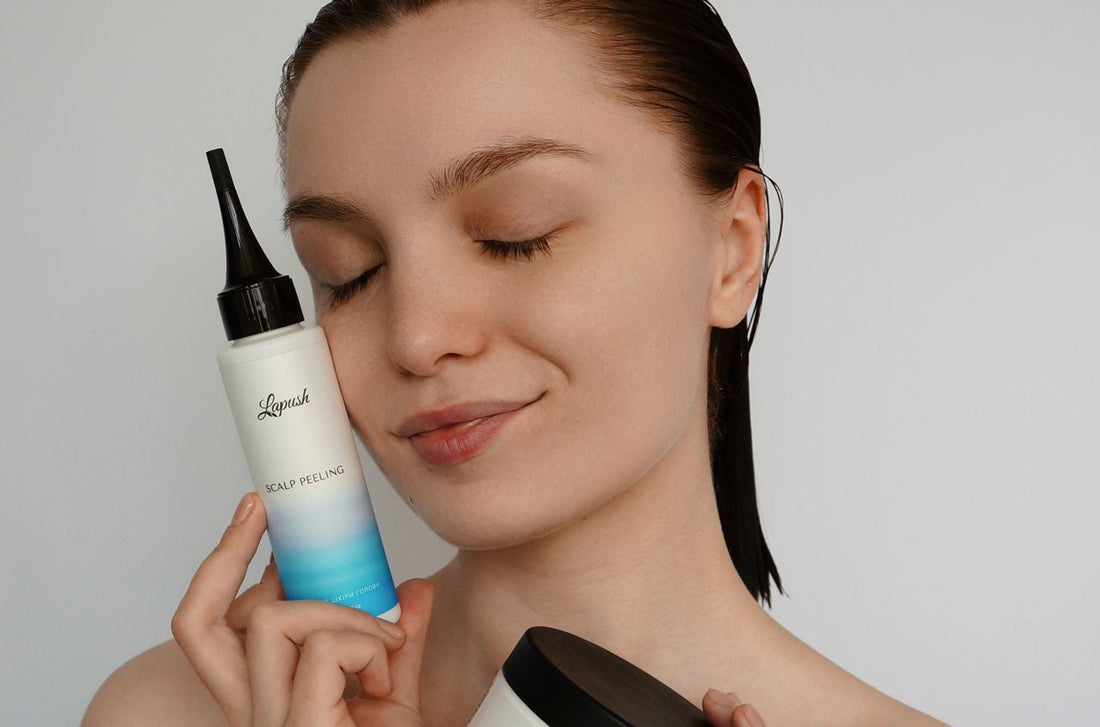
Scalp peeling at home: effective recipes and secrets of professionals
Scalp peeling is becoming one of the most popular beauty rituals of our time, because a healthy scalp is the basis of beautiful hair. Home peelings not only cleanse dandruff and excess sebum, but also stimulate blood circulation, accelerating hair growth and restoring its natural shine and strength.
The science of the scalp: why you need regular exfoliation
The scalp has a unique structure that is radically different from the skin on the face or body. It contains the largest number of sebaceous glands per square centimeter - up to 900 units, while on the face there are only 400-500. These glands produce sebum, which protects the hair, but when produced in excess, it creates an ideal environment for the reproduction of bacteria and fungi.
The natural process of scalp cell renewal occurs every 28 days, but under the influence of stress, poor diet, hormonal changes or the use of aggressive products, this cycle is disrupted. Dead cells accumulate, creating a "shell" that blocks oxygen access to hair follicles and slows hair growth.
An at-home scalp exfoliation helps restore the natural balance of your hair by removing build-up from styling products, chlorine from tap water, and environmental pollutants. It’s like a general cleaning for your hair – it literally breathes and grows faster.

Scalp type diagnosis: a personalized approach to care
Oily scalp is characterized by rapid oiliness of the hair roots the very next day after washing. Oily marks remain on the comb, and the hair looks dull and heavy. Clay peels and products with salicylic acid, which regulate the work of the sebaceous glands, are ideal for this type.
Dry scalp is often accompanied by itching, flaking and a feeling of tightness after washing. Hair can be dull, brittle at the ends, but oily at the roots - this is a paradox that many women face. Here you need gentle peels based on sugar or oatmeal with the addition of nourishing oils.
Sensitive scalp reacts with redness, irritation or even rash to regular shampoos and masks. Owners of this skin type often complain of "burning" rain or discomfort from the wind. Only the most delicate peelings based on natural ingredients without essential oils and acids are suitable for them.
- Oily: rapid salting, shiny roots, feeling of heaviness
- Dry: flaking, itching, dull hair
- Combination: oily roots and dry ends
- Sensitive: redness, irritation from cosmetics
- Normal: rare type, balance between dryness and oiliness
TOP-5 most effective home peelings for the scalp
A sea salt scrub is considered the gold standard for at-home scalp care. Sea salt contains over 80 minerals that nourish follicles and stimulate blood circulation. To prepare, mix 3 tablespoons of fine sea salt with 2 tablespoons of your regular shampoo and massage your scalp for 5-7 minutes in circular motions.
Coffee scrubs use natural antioxidants and caffeine to stimulate hair growth. Caffeine blocks dihydrotestosterone, a hormone that causes hair loss. Mix coffee grounds with coconut oil and massage into your scalp before washing your hair. This scrub also leaves your hair with a pleasant coffee scent.
Sugar scrub with honey combines gentle exfoliation with deep nourishment. Honey has antibacterial properties and attracts moisture, while sugar gently removes dead skin cells. This scrub is ideal for dry and sensitive scalps as it does not cause irritation.
A clay scrub made from bentonite clay is a real detox for oily scalps. The clay acts like a magnet, drawing out toxins, excess sebum and impurities from pores. Add apple cider vinegar to balance pH and tea tree essential oil for an antiseptic effect.
Oatmeal peeling is the gentlest option for sensitive skin. Oatmeal contains saponins - natural detergents that gently cleanse without overdrying. Grind oatmeal in a coffee grinder, add yogurt or kefir for a probiotic effect.
Step-by-step algorithm for performing peeling at home
The preparatory phase is critical to the success of the procedure. The day before the peeling, do not use styling products - varnishes, foams, gels create a film that prevents the peeling from penetrating the skin. Hair should be dry before applying the mixture, but not freshly washed - natural oils protect the skin from excessive exposure.
The application technique determines the effectiveness of the treatment. Divide the hair into 2-3 cm wide sections and apply the peeling directly to the scalp, not the hair. Use the pads of your fingers to gently massage in circular motions from the back of the head to the temples, then from the forehead to the crown. Massage for 5-10 minutes, depending on the sensitivity of the skin.
Exposure time varies depending on the type of peel and skin condition. Salt peels work instantly, so they can be washed off immediately after the massage. Clay masks need 10-15 minutes for maximum effect, and honey mixtures can be left for 20-30 minutes for deep nourishment.
- Preparation: clean, dry hair without styling
- Application: in sections, only on the scalp
- Massage: circular motions for 5-10 minutes
- Exposure: 0 to 30 minutes depending on type
- Rinse: with warm (not hot!) water
- Care: applying conditioner or mask
Frequency of administration and possible side effects
The optimal frequency of scalp peeling depends on its type and condition. For oily skin, the procedure can be carried out 1-2 times a week, for normal skin - once a week, for dry and sensitive - no more than 1-2 times a month. Excessive use of peelings can lead to overdrying and irritation.
The first signs that you have overdone the peeling are increased hair loss, itching, redness or peeling of the skin. In this case, you need to take a break for 2-3 weeks and switch to the mildest care products. Remember: the scalp needs time to recover from any exposure.

Contraindications for home peels are open wounds on the scalp, psoriasis or eczema in the acute stage, allergic reactions to the components of the mixture. Pregnancy and breastfeeding require special caution - some essential oils can be dangerous.
Proper post-peeling care includes using a mild sulfate-free shampoo, applying a moisturizing mask to the lengths of your hair (avoiding the roots), and protecting yourself from UV rays for the next few days.
- Increased hair loss (more than 100-150 hairs per day)
- Persistent itching or burning of the scalp
- Appearance of a rash or redness
- Excessive dryness or, conversely, oiliness of hair
- Unpleasant odor from the scalp
- Deterioration of the overall condition of the hair
Professional secrets for maximum effect
Water temperature is critical to the success of the peeling. Hot water stimulates excessive sebaceous glands and can cause irritation after the procedure. The optimal temperature is barely warm, close to body temperature. Finish the procedure with a cool rinse to close the hair cuticle.
Massage techniques significantly enhance the peeling effect. Start with light movements and gradually increase the intensity. Pay special attention to the areas where hair is most prone to loss - the crown and temples. Use the "five-finger" technique - massage with the entire palm at the same time.
Seasonality also influences the choice of peeling. In autumn and winter, the scalp becomes drier due to heating and cold, so it is worth choosing more nourishing options with oils. In spring and summer, you can use more active cleansing formulas.
Combining different types of peels gives the best results. For example, once a month, do a deep detox peel with clay, and every week - a light sugar or oatmeal peel. This scheme provides constant renewal without excessive stress on the skin.
Nourishment from within: how to enhance the effect of peeling
B vitamins are critical for scalp health and hair growth. Biotin (B7) stimulates the synthesis of keratin, the main protein in hair. Niacin (B3) improves blood circulation in the follicles. Include eggs, nuts, green leafy vegetables, and whole grains in your diet.
Omega-3 fatty acids moisturize the scalp from the inside and reduce inflammation. Salmon, sardines, flaxseeds, walnuts – these foods should be on your table at least 2-3 times a week for a noticeable improvement in the condition of your hair.
Zinc regulates the work of the sebaceous glands and accelerates the healing of microtraumas on the scalp. A lack of this mineral often leads to dandruff and slow hair growth. Oysters, beef, pumpkin seeds contain the highest amount of absorbable zinc.
Sufficient water intake is the basis of a healthy scalp. Dehydration leads to excessive work of the sebaceous glands, which try to compensate for the lack of moisture. The norm is 30-35 ml of pure water per kilogram of body weight daily.

